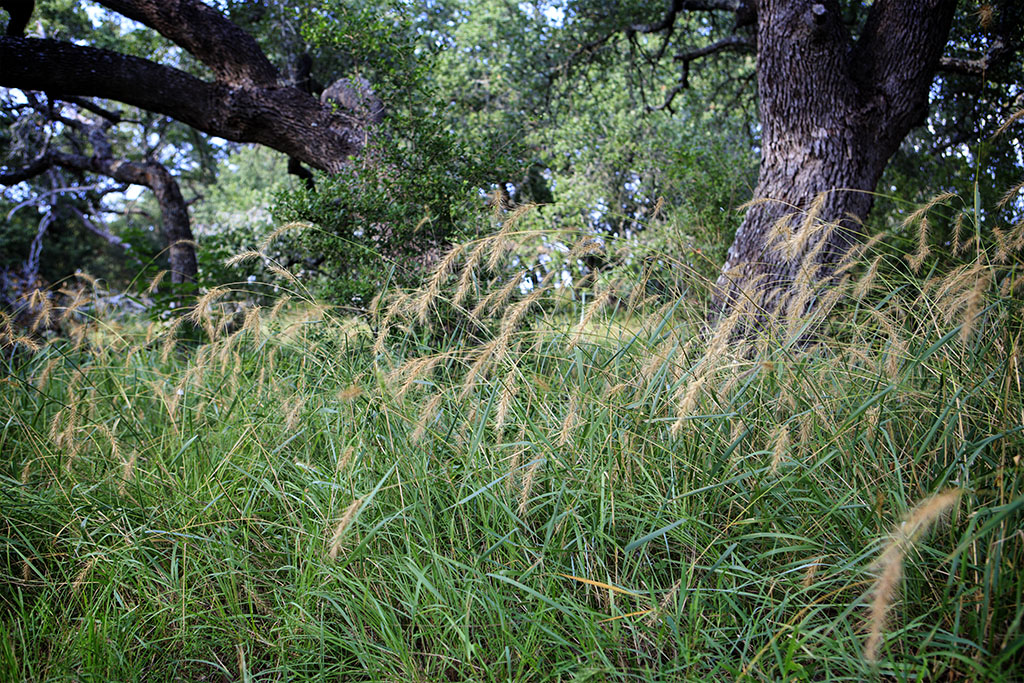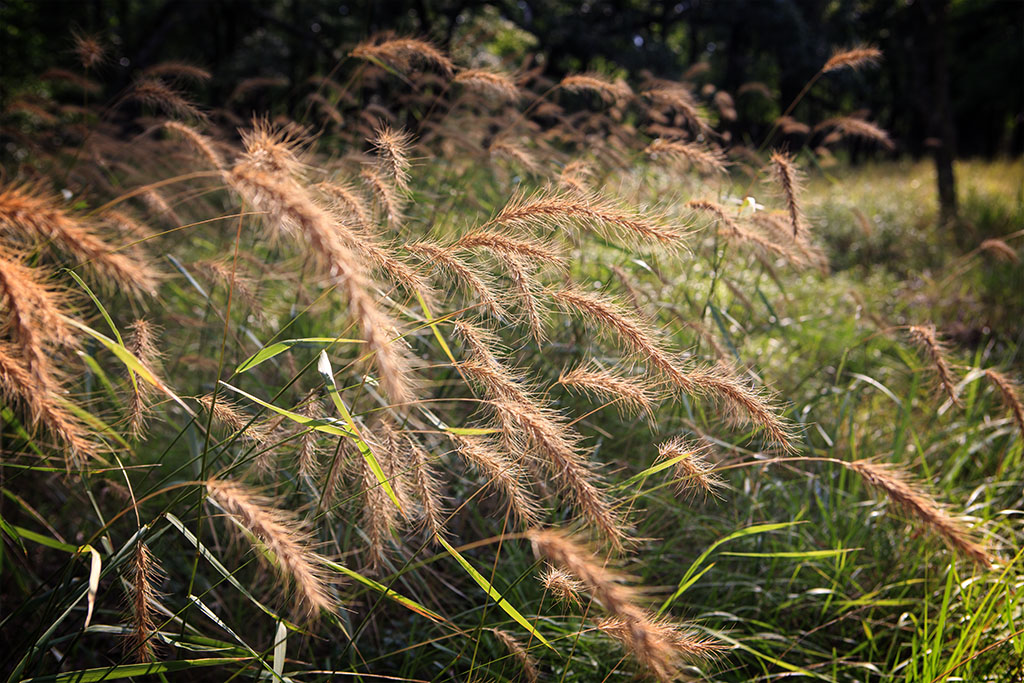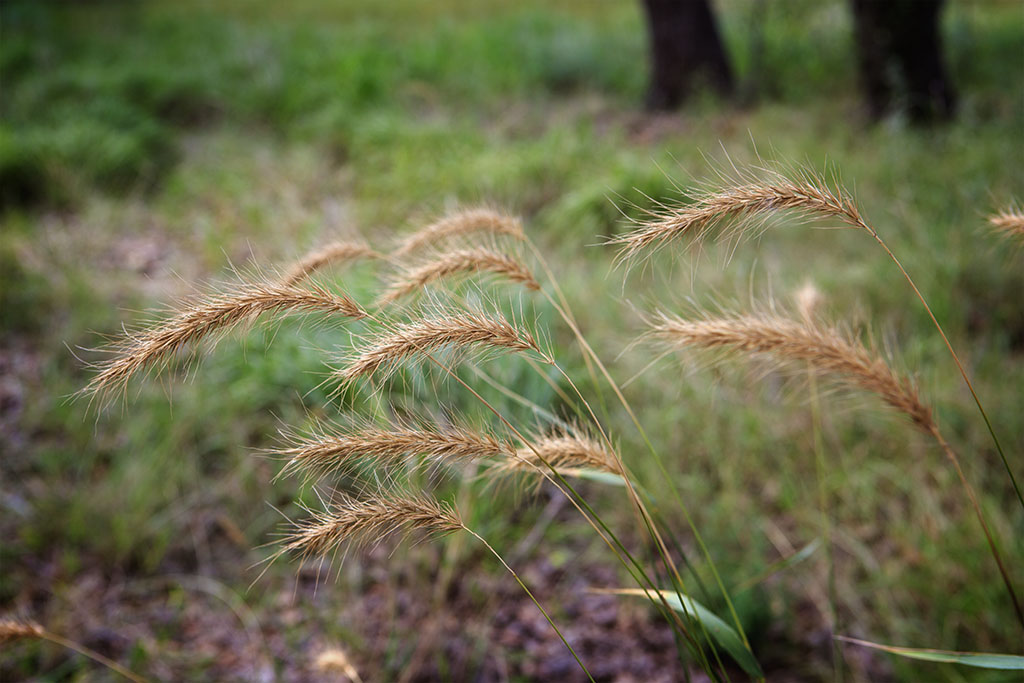Bristlegrass
I saw this beautiful stand of bristlegrass (Setaria) on our property today. We have several stands near the house and they jump out right now because of the pretty gold-colored seedheads. This stand grows in the canopy shade provided by two large live oaks.
I mowed recently, but left these stands as they were. It’s good to leave some of our landscape wild. This provides habitat and a food source for the small creatures that share our land. The great thing is that we benefit too. I think you’ll agree this adds beauty and interest to the landscape.
I’m not sure exactly what species of bristlegrass we have. I’ve called it Carolina Bristlegrass before, but it may be Plains Bristlegrass (Setaria leucopila).
In any case, it’s quite lovely. Bristlegrass is one of our natives and does quite well with little or no care. The plants are about 3 feet tall, but droop with the weight of the seeds.
Here’s a better view of the seedheads, which are backlit. Their golden-brown color stands out well with the green landscape. The seedheads are sometimes referred to as fox tails, and you can see why.
Here’s a slightly closer view of the seedheads. They have hairs or bristles, hence the name and almost look like fur.
Bristlegrass is an important food source for seed-eating birds such as dove and quail.




Comments
Bristlegrass — No Comments
HTML tags allowed in your comment: <a href="" title=""> <abbr title=""> <acronym title=""> <b> <blockquote cite=""> <cite> <code> <del datetime=""> <em> <i> <q cite=""> <s> <strike> <strong>